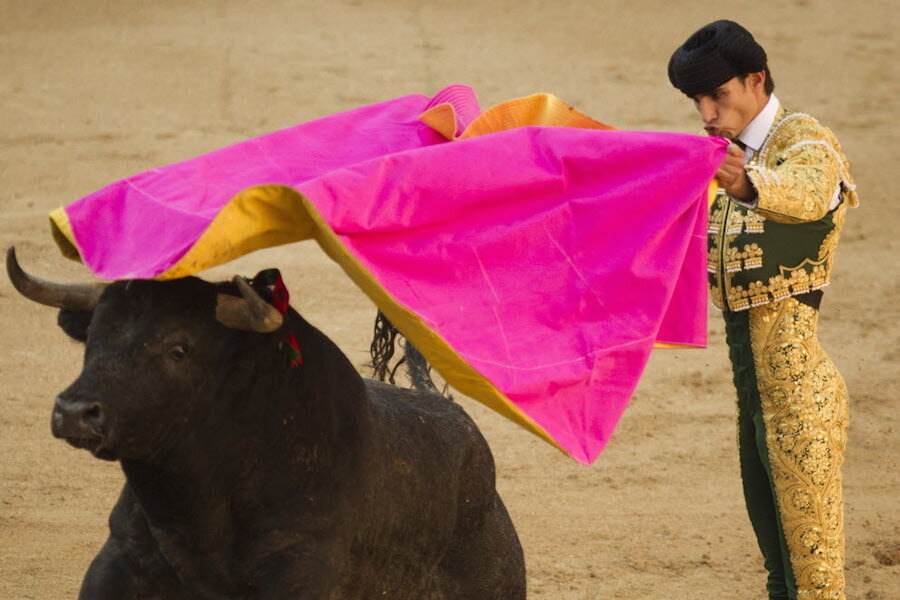Spanish matador killed on live TV: Is bullfighting culture or cruelty?
Loading...
Matador Victor Barrio, 29, was pronounced dead on Saturday after being killed by a bull during a match in Teruel. He is the first to die in a bullring since two matador’s assistants were killed in 1992 in Seville. The last matador to die was Jose Cubero, in 1985.
A 28-year-old man also died in a bull run in Pedreguer, near Valencia, this summer. Several people die each year during Spain’s summer festivals that involve bulls. In the bull run, Spaniards and visitors wearing red scarves try to outrun bulls sprinting through the streets. Each of the bulls, six in the most famous run in Pamplona this year, then fights and dies in the ring.
Following Barrio’s death, there has been an outpouring of love and criticism from around the world on social media. Many feel for the matador and his family, but others hope the death will spur the beginning of the demise of the practice.
In 2006, when Portugal opened a shopping center that included bullfighting, Miguel Moutinho of the animal rights group Animal told The Guardian, “The industry is in decline and bullfights are losing force,” a statement belied by its being the second most popular spectator competition in the country after football.
Opinion polls on bullfighting’s popularity in Spain are rare, and, when conducted, often reveal ambiguity toward the practice. For instance, a 2010 poll in the Spanish national newspaper El País found that 60 percent did not like bullfighting, but that 57 percent disagreed with Catalonia’s decision to ban it.
Proponents of bullfighting say it is an integral part of Spanish culture. The origins of bullfighting are not precisely known, though the tradition was influenced by a variety of rituals that began thousands of years ago, including bullfights from 1500 BC in Crete.
But animal rights activists argue that torture is a major part of the ceremony. Before the bull runs, the animals are treated in a way that will rouse and disable them. “They may be weakened by beatings, have their horns shaved to keep them off balance, or have petroleum jelly rubbed into their eyes to impair their vision,” PETA writes.
During the event, the disoriented bull is attacked by three layers of assailants: picadors on horses with lances, banderillas with spears, and finally, the matador with a sword, according to Aficionados International, which aims to educate the public about bullfighting.
Many jurisdictions are tightening regulations on bullfighting and decreasing the flow of public funds toward the practice, as Catalonia did in 2010.
Die-hard fans of bullfighting, however, do not view the event as torture or taunting. They don't consider it a sport – bullfighting news doesn't typically appear in the sports sections of the newspapers – but rather an art.
“For aficionados, the true goal is bringing out the innate bravery and nobility and distinct character of each bull, and they’ll say there is nothing more disgraceful than a fight in which the tips of the bull’s horns have been blunted (it’s illegal, though it happens all the time), or one in which a bull has been too badly weakened by the lance of the horse-bound picador in the early stage of action, or one in which a bull is messily dispatched by the matador,” Michael Kimmelman wrote for the New York Times.
“Sometimes with a bull you have to tell it what you want, other times ask it, and the magic is that each bull is different,” matador Cayetano Rivera Ordóñez told Kimmelman. “Often I feel sad for the bulls, and I wish I didn’t have to do this,” speaking of killing the bull, “when the bull gives you so much, and all you feel is grateful.”








